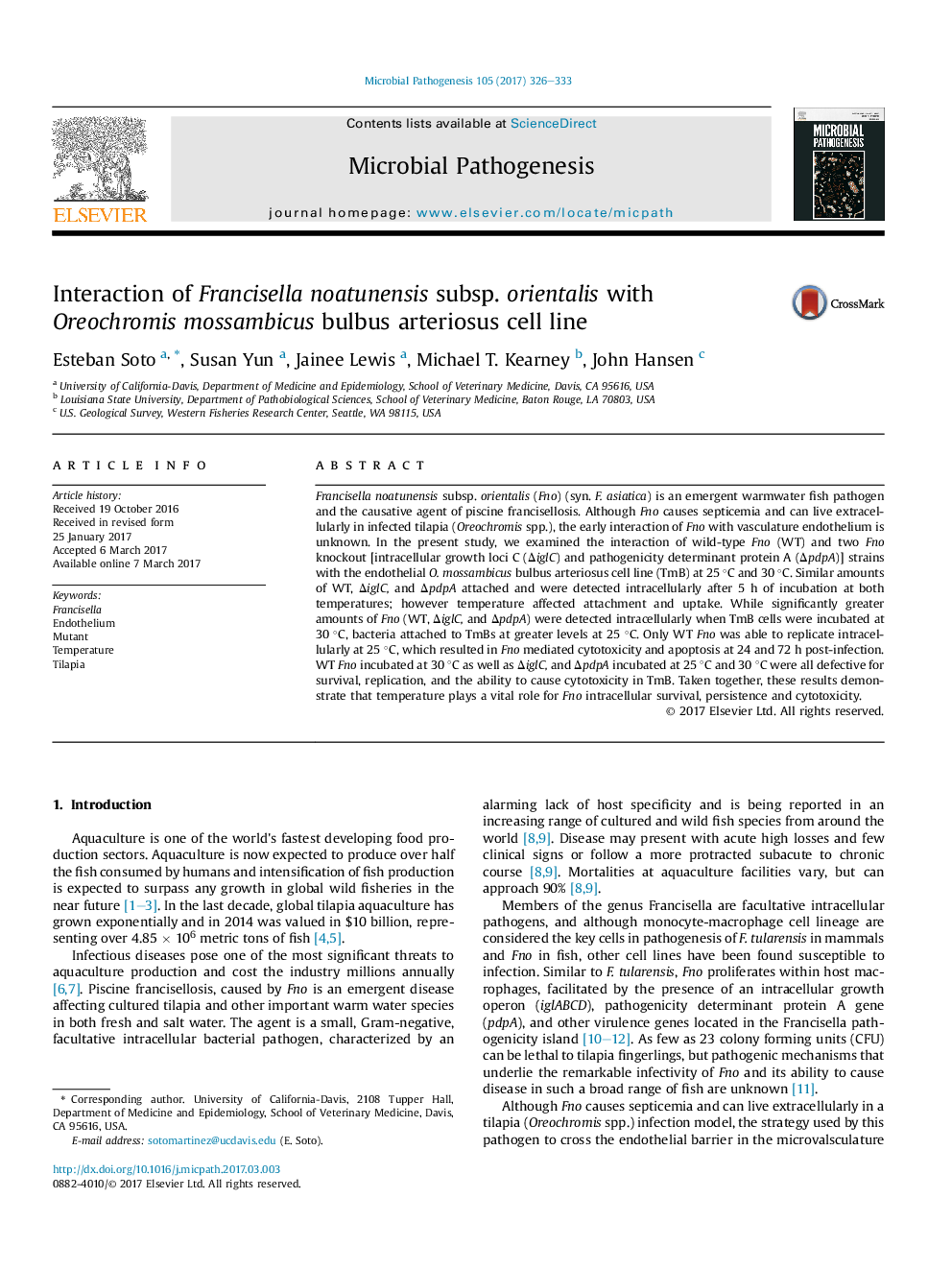| Article ID | Journal | Published Year | Pages | File Type |
|---|---|---|---|---|
| 5673844 | Microbial Pathogenesis | 2017 | 8 Pages |
Abstract
Francisella noatunensis subsp. orientalis (Fno) (syn. F. asiatica) is an emergent warmwater fish pathogen and the causative agent of piscine francisellosis. Although Fno causes septicemia and can live extracellularly in infected tilapia (Oreochromis spp.), the early interaction of Fno with vasculature endothelium is unknown. In the present study, we examined the interaction of wild-type Fno (WT) and two Fno knockout [intracellular growth loci C (ÎiglC) and pathogenicity determinant protein A (ÎpdpA)] strains with the endothelial O. mossambicus bulbus arteriosus cell line (TmB) at 25 °C and 30 °C. Similar amounts of WT, ÎiglC, and ÎpdpA attached and were detected intracellularly after 5 h of incubation at both temperatures; however temperature affected attachment and uptake. While significantly greater amounts of Fno (WT, ÎiglC, and ÎpdpA) were detected intracellularly when TmB cells were incubated at 30 °C, bacteria attached to TmBs at greater levels at 25 °C. Only WT Fno was able to replicate intracellularly at 25 °C, which resulted in Fno mediated cytotoxicity and apoptosis at 24 and 72 h post-infection. WT Fno incubated at 30 °C as well as ÎiglC, and ÎpdpA incubated at 25 °C and 30 °C were all defective for survival, replication, and the ability to cause cytotoxicity in TmB. Taken together, these results demonstrate that temperature plays a vital role for Fno intracellular survival, persistence and cytotoxicity.
Related Topics
Life Sciences
Immunology and Microbiology
Microbiology
Authors
Esteban Soto, Susan Yun, Jainee Lewis, Michael T. Kearney, John Hansen,
